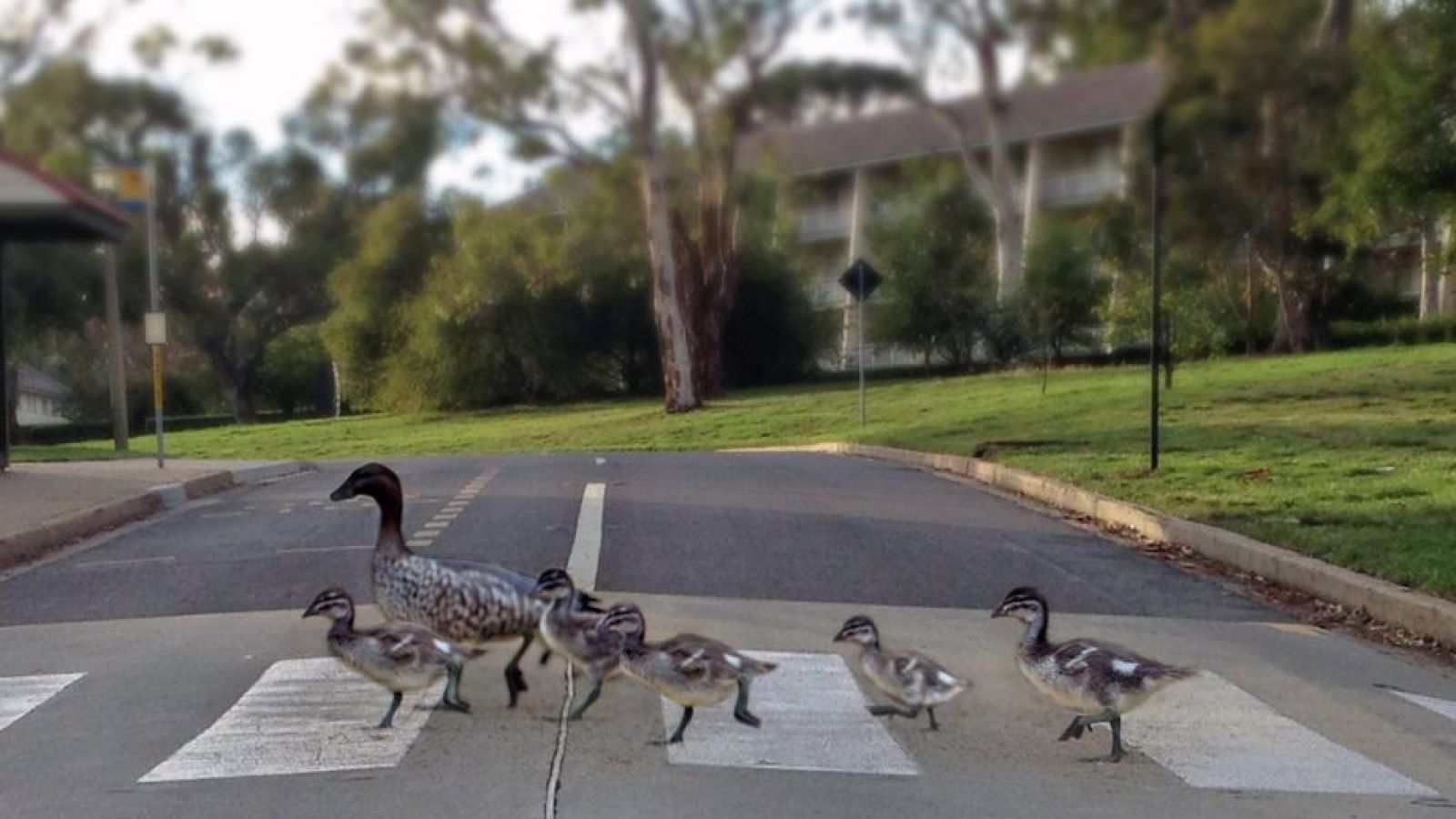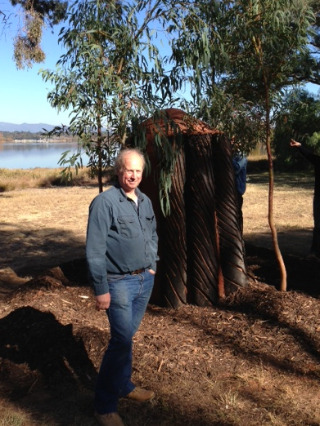An ever-changing art work

 A sculpture created by UK environmental artist Chris Drury that will decay and grow over time was unveiled yesterday at the ANU International Sculpture Park.
A sculpture created by UK environmental artist Chris Drury that will decay and grow over time was unveiled yesterday at the ANU International Sculpture Park.
Chris, the 2013 H.C. Coombs Creative Arts Fellow, has spent one month on campus constructing the art work which explores the relationship between nature and culture.
“The non-static nature of the work is what makes this piece exciting,” said Gordon Bull, Head of The School of Art, at the launch.
The materials used for the sculpture, The Way of Trees, Earth and Water, include a huge stone encased in rammed earth and surrounded by tree trunks. The trunks were scorched black and carved with patterns inspired by the Australian landscape. Four white-barked mannifera eucalyptus trees circle the entire work.
As the trees grow, the rammed earth and tree trunks will deteriorate, slowly uncovering the stone underneath. “In 30 – 40 years there will be four massive mannifera trees enclosing a standing stone,” says Chris.
“An idea grew to make a work which would both decay and grow and which would change over time; a work which acknowledged the red centre as well as looking towards the mountains from where replenishment - water, comes.”
Chris’ travels around Australia and experience with indigenous culture influenced his work. The construction of the work is also a reflection of Canberra’s landscape – a planned city ringed by hills and mountains. The stone in the centre of the piece is aligned to the water source of Lake Burley Griffin at Namadgi National Park.
Two third-year sculpture students, Dierdre Pearce and Isobel Rayson, along with other Sculpture Workshop students and staff assisted Chris with installing the work. ANU arborists and grounds staff helped choose the site, materials and trees. Chris documented the making of the sculpture on his blog.
The H.C. Coombs Creative Arts Fellowship, now in its 48th year, is awarded annually in the fields of visual arts, writing and performance. Chris says meeting and collaborating with ANU staff and students was a highlight of his visit to ANU.
Chris’ next projects involve working with farmers in Dorset, England, and ecologists in Sweden and France.
Chris will speak at the Sculpture: Space and Place symposium on Sunday. This event brings together artists, sculptors, curators and consultants to explore ideas and issues around public sculpture, and is part of the 2013 Canberra Centenary program. The symposium starts today with a lecture from London-based visual arts curator Vivien Lovell and the opening of the ANU Sculpture Workshop Alumni exhibition.